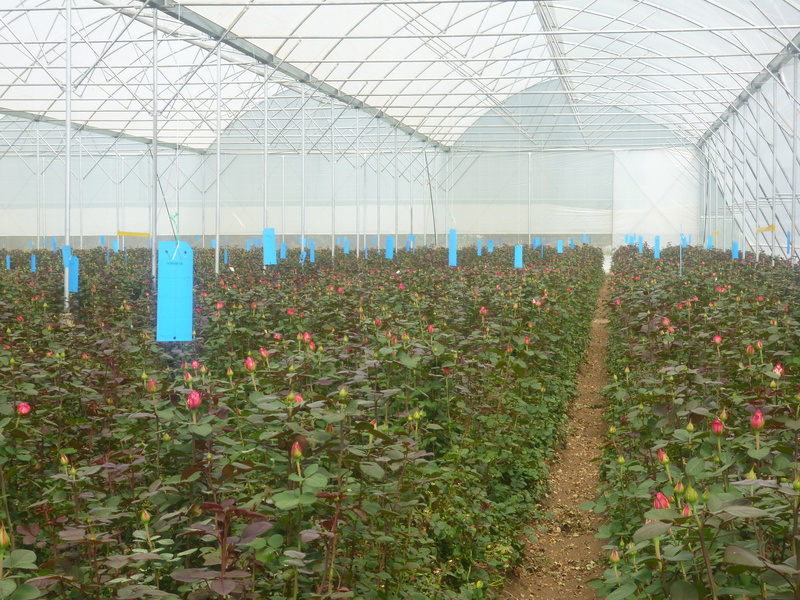
Few problems present as imminent danger for a flower grower as the presence of thrips in the crop. Thrips are still a major pest in a many greenhouse crops in Kenya. Thrips damage plants by sucking out cells on the leaf surface. This causes silver-grey spots on the leaves where the plant cells have been destroyed and reduces the production potential of the plant. At high infection levels red spots and brown streaks are visible on the petals. Thrips can also deform the flower buds which may fail to open and cause leaves to wither.
The key is management
Thrips infestations are difficult to control. Their high propensity to develop insecticide resistance has been attributed to their biological attributes. These include their small sizes, high rates of reproduction and cryptic (hiding) habits. A female thrips can produce up to 250 eggs during its life cycle. This quickly leads to great numbers of thrips infesting individual plants.
Therefore, successful management of thrips is a matter of maintenance and vigilance. First, inspect any planting material you import into the greenhouse for signs of thrips or their damage. Further, get rid of any weeds or grass around the greenhouse that may provide host to adult thrips which may later fly in from outside. Thrips may also be spread from workers’ clothes, infested plants and the growing media.
Monitoring as a tool
It is important to monitor the population levels of thrips for successful pest management. Most insects have the ability to detect and respond to UV light and colours using receptors. In particular, Frankliniella occidentalis, has great sensitivity to UV, green-yellow and blue colours.
Blue sticky traps are especially more attractive to thrips although yellow sticky traps are more helpful in attracting other pests such as whiteflies, leaf miners and aphids. Depending on how many pests you need to monitor, crop susceptibility and the need to detect thrips population while they are still at low levels, blue sticky traps are your best choice for effective monitoring of adult thrips population densities.
Why mass trapping works
With every adult thrips that is trapped, you dramatically reduce the chances of future generations of thrips from damaging your flowers. Further, one is able to reduce chemical pesticide sprays. Horiver-TR, the blue sticky trap cards from Koppert, have proven to be quite valuable to many growers in Kenya. These are mainly used for monitoring and mass trapping of thrips. The recommended rate for mass trapping is 1 card per 10m2 (1000 cards per Hectare). These should be checked regularly and replaced as needed.
Growers who have successfully adopted mass trapping of thrips with Horiver-TR have reported that thrips control has become much easier. They have been able to reduce their thrips sprays by up to 50%, even during the warm season when thrips pressure is high. If you want to trap even more thrips, you can combine the sticky cards with Kairomones (thrips attractant for both males & females) to lure thrips out of their hiding places toward the sticky traps. Growers who combine sticky cards with Kairomones such as LUREM-TR from Koppert have reported that the sticky cards captured up to 43% more thrips compared to those without.